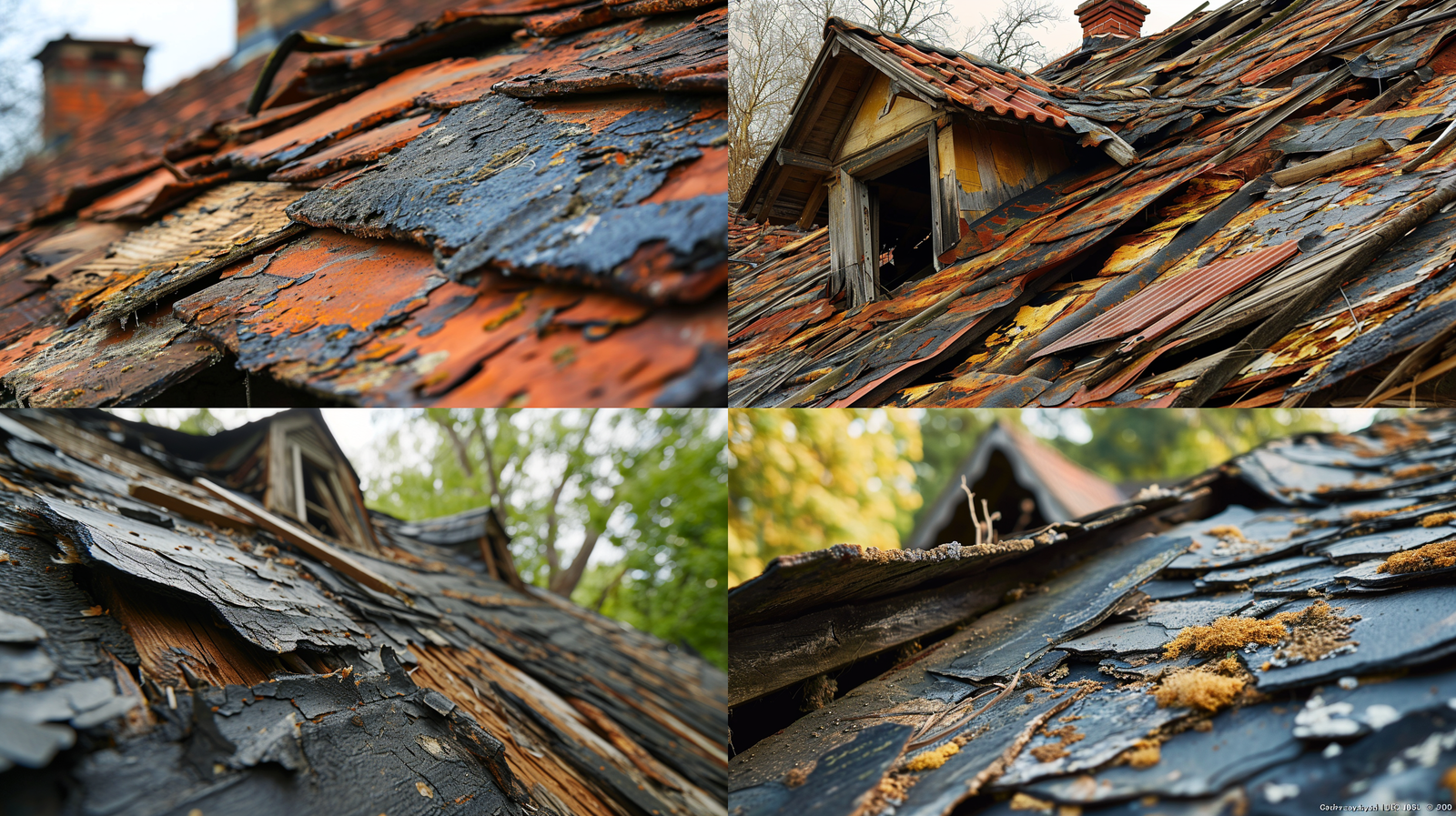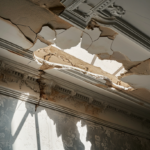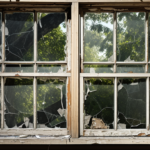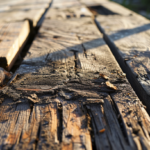Last Updated on 26th December 2023
In this comprehensive guide, we will explore the essential steps and techniques for repairing a damaged roof. From assessing the extent of the damage to gathering the necessary tools and materials, we will cover each stage of the repair process in a professional and concise manner. Whether you are dealing with leaks, broken shingles, or structural issues, this article will provide you with the knowledge and guidance needed to successfully restore your roof to its optimal condition.
Assessing the Roof Damage
Regularly assessing the roof damage is crucial in order to determine the extent of the problem and develop an effective repair plan. When it comes to assessing the roof damage, it is important to inspect both the interior and exterior of the roof. On the exterior, look for missing or damaged shingles, sagging or uneven areas, and signs of water damage such as stains or mold. Inside the house, check for any signs of water leaks, such as dark spots on the ceiling or walls, and inspect the attic for any signs of water intrusion or structural damage. Once the assessment is complete, it is important to identify the repair solutions. This may involve replacing missing or damaged shingles, repairing leaks, reinforcing weak areas, or even replacing the entire roof if necessary. By assessing the roof damage and identifying the appropriate repair solutions, homeowners can ensure their roof remains in good condition and protect their property from further damage.
Gathering the Necessary Tools and Materials
What tools and materials are needed to effectively gather in order to repair the damaged roof? When it comes to roof repair, having the right tools and materials is crucial for a successful and efficient job. Some of the essential tools include a ladder, safety harness, roofing hammer, utility knife, pry bar, and a tape measure. These tools are necessary for tasks such as removing damaged shingles, cutting new ones to size, and securing them in place. In addition to tools, there are several roof repair materials that are essential. These include roofing shingles, underlayment, flashing, sealant, and nails. It is important to ensure that the materials used are of high quality to ensure the longevity and durability of the repaired roof. By gathering the necessary tools and materials, professionals and DIY enthusiasts alike can effectively repair a damaged roof and restore its functionality and appearance.
Preparing the Work Area
To ensure a safe and organized work environment, it is essential to thoroughly clean and declutter the work area before starting the repair process. Roof cleaning is an important step in preparing the work area for repairs. A clean roof surface helps to identify the damaged areas more easily and ensures better adhesion of repair materials. Before starting the cleaning process, it is important to take safety precautions. Use a sturdy ladder or scaffolding to access the roof safely. Wear appropriate personal protective equipment, such as gloves and safety goggles, to protect yourself from any debris or chemicals used in the cleaning process. Inspect the roof for any loose or damaged shingles, and remove any debris or leaves that may have accumulated. By taking these safety precautions and thoroughly cleaning the work area, you can ensure a smoother and safer repair process.
Removing Damaged Shingles or Tiles
When it comes to removing damaged shingles or tiles, there are a few key techniques to keep in mind. For shingle replacement, start by carefully lifting the damaged shingle and removing any nails or adhesive. Then, simply slide the new shingle into place and secure it with new nails or adhesive as needed. When it comes to tile removal, it is important to use a flat pry bar to gently lift and remove the damaged tiles, being careful not to damage the surrounding tiles in the process.
Shingle Replacement Techniques
Implementing proper technique, the damaged shingles are carefully removed to facilitate seamless replacement in the roof repair process. When it comes to shingle replacement, it is important to consider reusing materials and hiring professionals for the job. Reusing materials not only helps in reducing waste but also saves money. By carefully removing the damaged shingles, they can be inspected for any salvageable pieces that can be reused. This not only reduces the cost of purchasing new shingles but also minimizes the environmental impact. Additionally, hiring professionals ensures that the replacement is done correctly and efficiently. Professionals have the necessary skills and experience to handle the job, ensuring that the new shingles are installed properly, providing long-lasting protection for the roof. So, whether it’s reusing materials or hiring professionals, these considerations are crucial in the shingle replacement process.
Tile Removal Methods
Careful inspection and strategic planning are essential when using tile removal methods to remove damaged shingles or tiles from a roof. Tile removal techniques play a crucial role in the overall process of tile repair methods. When faced with damaged tiles or shingles, it is important to assess the extent of the damage before proceeding. This involves checking for any signs of water leakage, mold growth, or structural issues. Once the inspection is complete, it is time to plan the tile removal process. This includes gathering the necessary tools and materials, ensuring safety precautions are in place, and determining the most suitable method for tile removal. Some common tile removal techniques include using a pry bar, heat gun, or specialized tile removal tools. By following these careful steps, homeowners and professionals can effectively repair their damaged roofs using the appropriate tile removal methods.
Repairing Leaks and Water Damage
Efficiently addressing and resolving water damage caused by leaks is crucial to maintaining the structural integrity of the building. When it comes to repairing roof leaks and water damage restoration, prompt action is necessary to prevent further damage and costly repairs. The first step in addressing roof leaks is to identify the source of the leak. This can be done by inspecting the roof for any visible signs of damage, such as missing or damaged shingles, cracked flashing, or clogged gutters. Once the source of the leak is identified, repairs can be made. This may involve replacing damaged shingles, repairing flashing, or sealing any gaps or cracks. It is important to address water damage promptly to prevent the growth of mold and mildew, which can cause further damage to the building and pose health risks to occupants. Water damage restoration may involve drying out the affected areas, removing any damaged materials, and implementing measures to prevent future leaks and water damage. By addressing roof leaks and water damage promptly and effectively, the structural integrity of the building can be maintained, and costly repairs can be avoided.
Fixing Roof Flashing and Sealant Issues
Addressing the deficiencies in roof flashing and sealant is crucial to ensure the long-term durability and waterproofing of the roofing system. When it comes to fixing chimney leaks and repairing roof valleys, proper installation and maintenance of flashing and sealant are essential. Chimney leaks often occur due to inadequate flashing around the base of the chimney. This can result in water seeping into the roof and causing damage. Repairing chimney leaks involves inspecting the flashing for any signs of damage or deterioration and replacing it if necessary. Similarly, roof valleys, where two roof slopes meet, can be prone to leaks if the flashing and sealant are not properly installed or deteriorated. Regular inspections and prompt repairs of these areas are necessary to prevent water damage and maintain the integrity of the roof.
Replacing Missing or Broken Shingles
When it comes to replacing missing or broken shingles on your roof, it is important to consider a few key points. Firstly, selecting the right type of shingles is crucial to ensure a proper fit and match with the existing roof. Secondly, the decision between repair and replacement depends on the extent of the damage and the overall condition of the roof. Lastly, implementing weatherproofing techniques during the replacement process will help to ensure the longevity and durability of the new shingles.
Shingle Selection Tips
With careful consideration of the roof’s aesthetic and durability needs, selecting the most suitable shingle replacement options can ensure a seamless and long-lasting repair. When it comes to shingle installation methods, there are two main types of roof shingles: asphalt and architectural shingles. Asphalt shingles are the most common and affordable option, offering a good balance between cost and durability. They are relatively easy to install and provide adequate protection against the elements. On the other hand, architectural shingles are a premium option that offers a more aesthetically pleasing appearance. They are thicker and heavier than asphalt shingles, providing enhanced durability and a longer lifespan. Additionally, architectural shingles can mimic the look of other roofing materials, such as wood or slate. Ultimately, the choice between asphalt and architectural shingles depends on the specific needs and preferences of the homeowner.
Repair Vs. Replacement
In determining whether to repair or replace missing or broken shingles, homeowners must weigh the cost-effectiveness of repairs against the potential benefits of a complete replacement. When considering repair costs, it is important to assess the extent of the damage and the overall condition of the roof. Repairs can be a cost-effective solution for minor issues, such as a few missing shingles or small cracks. However, if the roof is significantly damaged or nearing the end of its lifespan, a complete replacement may be necessary. The pros of repairing include lower upfront costs and a shorter completion time. On the other hand, the cons include the potential for additional repairs in the future and the possibility of not addressing underlying issues. Ultimately, homeowners should consult with a professional to assess their specific situation and determine the best course of action.
Weatherproofing Techniques
Effective weatherproofing techniques are essential for preventing further damage to the roof and ensuring its longevity. Weatherproofing materials and applying waterproof sealant are two key components of this process. Weatherproofing materials, such as roofing membranes, are designed to create a barrier against moisture, UV rays, and other environmental factors. These materials are typically applied to the roof surface to provide an additional layer of protection. Additionally, applying waterproof sealant is an important step in weatherproofing a roof. Sealants are used to fill gaps and cracks in the roof, preventing water from seeping in and causing damage. They also help improve the overall durability and lifespan of the roof. By using weatherproofing materials and applying waterproof sealant, homeowners can effectively protect their roofs from the elements and extend their lifespan.
Reinforcing the Roof Structure
The contractor’s assessment of the roof structure revealed several weak areas that require reinforcing. Strengthening the roof structure is crucial to ensure its longevity and prevent potential damage. There are various roof reinforcement techniques that can be employed to address these weak areas effectively. One method involves adding additional support beams or trusses to strengthen the existing roof structure. This helps distribute the weight evenly and reduces the risk of collapse. Another technique is to use roof reinforcement materials such as metal straps or braces, which are installed to provide additional stability and support. Additionally, regular maintenance and inspections can help identify weak areas early on, allowing for prompt reinforcement and preventing further deterioration. By implementing these roof reinforcement techniques, property owners can ensure the structural integrity of their roofs and protect their investments for years to come.
Conducting a Final Roof Inspection
Before proceeding with any repairs, it is vital to conduct a final roof inspection to assess the overall condition and identify any potential issues that may have been missed during earlier assessments. A thorough inspection is crucial to ensure that all necessary repairs are addressed and that the roof is in optimal condition. To conduct a comprehensive inspection, it is recommended to use a roof inspection checklist that includes key areas such as the shingles, gutters, flashing, and ventilation. The checklist should also include signs of roof damage, such as missing or damaged shingles, sagging or uneven areas, water stains or leaks, and excessive granules in the gutters. By following a thorough roof inspection checklist and being aware of the signs of roof damage, homeowners and professionals can effectively identify and address any issues before proceeding with the necessary repairs.




